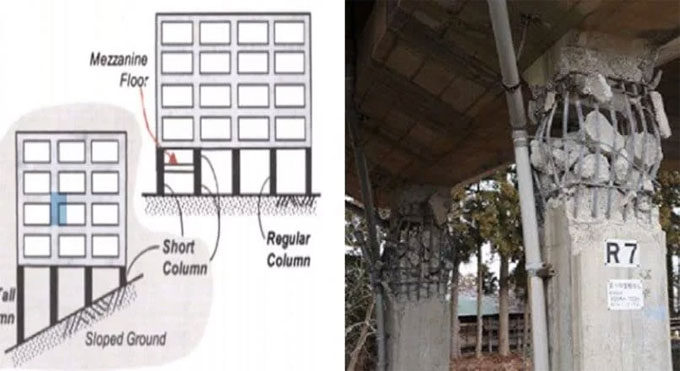
Reason for damaging & collapsing of concrete buildings
A reinforced concrete building gets damaged and collapses due to several reasons such as sliding of roofs, falling of walls, crushing of columns, short column effects, diagonal cracking, foundation sinking and tilting etc.
Types and Causes for Damage and Collapse of Concrete Buildings.
Given below, the details about the most common types of damages in reinforced concrete buildings:
1. Sliding of Roofs off the Supports: Where the beams are just supported on walls or columns, they are susceptible to slide if the severity of earthquake surpasses the frictional resistance and several times come out of the support and collapse, specifically when the bearing length is minor.
2. Collapsing of Infill Walls: The infill panel walls amid reinforced concrete columns overturn outer the framework when they are not firmly retained or secured with the frames.
3. Crushing of Column Ends and Virtual Hinging: When extreme shaking occurs, the column ends are susceptible to serious eccentric compressive stresses which compel the concrete to get crushed and broke down from the exterior surfaces. In frequent cycles, the damage proceeds interiors, consequently the effective section is shortened significantly. Both the column ends substantially function as pins and the entire framework falls down like a mechanism.
4. Short Column Effect: If infill walls having wide openings are joined to the columns, the sections of the columns to be deformed against lateral seismic loads turn out to be very short with reference to their normal height.
Such short columns develop into much harder as compared to other columns and pull greater shear forces under which they experience extreme diagonal tension which result in collapsing of the column.
5. Diagonal Cracking in the Columns: Columns are exposed to diagonal cracking resulting from large seismic shears occurred under extreme ground shaking. When the building also sustains the twisting action, the crack may change to a spiral form that decreases load bearing strength of the columns significantly.
6. Diagonal Cracking of Column Beam Joint: Several times, diagonal cracking happens through the intersection of the columns with the beams that considerably damages the strength of the frame.
7. Drawing Out of the Reinforcing Bars: Where the anchor length of the column bars or overlaps among the longitudinal bars are insufficient for producing full tensile strength of the bar, they are frequently drawn out because of tensions occurred in the column against reversal of stresses.
8. Collapse of Gable Frames: Reinforced concrete gable frames, frequently applied for school workshops, gymnasia and assembly halls, and cinema halls, may be expanded devoid of secondary resistance obtainable as soon as a joint fails. These are frequently found to fail and collapse if not properly designed and detailed.
9. Foundation Sinking and Tilting: Sinking or tilting of foundations of columns because of seismic shaking happens in loose soft soils and can result in extreme cracking of the superstructure and even fall down.


